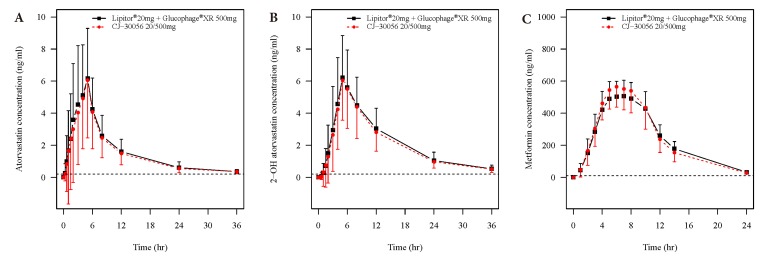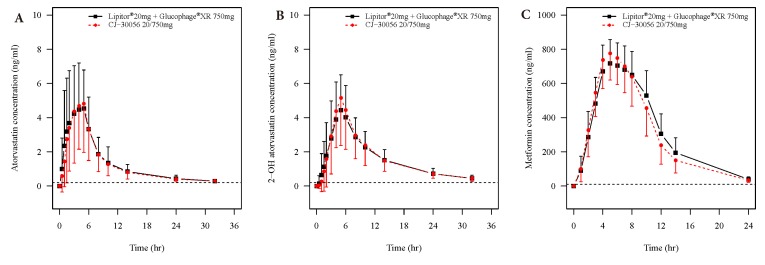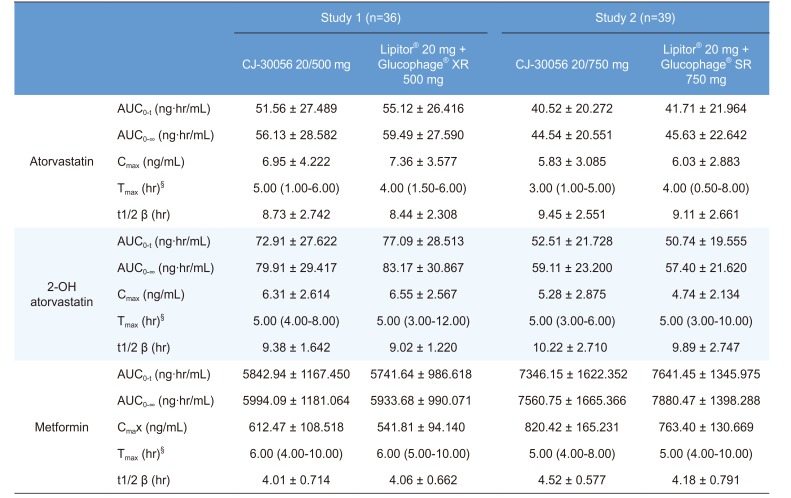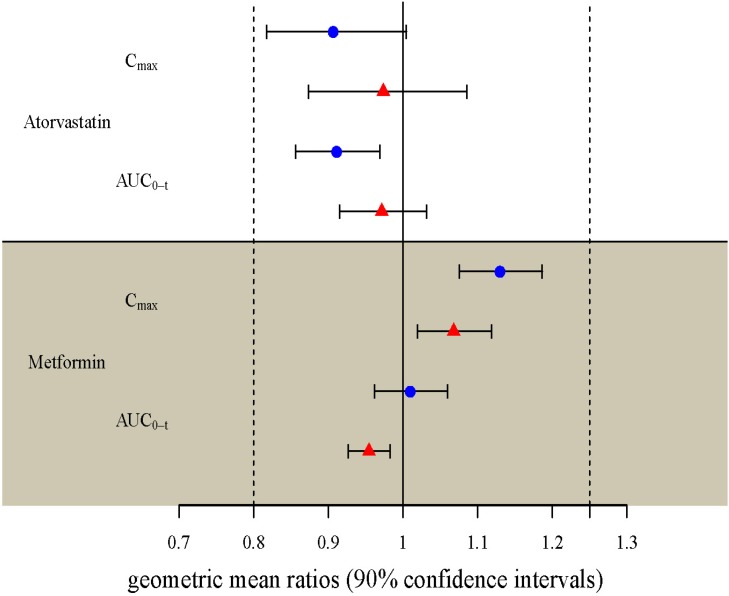1. Baigent C, Keech A, Kearney PM, Blackwell L, Buck G, Pollicino C, et al. , Efficacy and safety of cholesterol-lowering treatment: prospective meta-analysis of data from 90,056 participants in 14 randomised trials of statins. Lancet. 2005; 366:1267–1278. PMID:
16214597.
2. Singh IM, Shishehbor MH, Ansell BJ. High-density lipoprotein as a therapeutic target: a systematic review. JAMA. 2007; 298:786–798. PMID:
17699012.
3. Expert Panel on Detection, Evaluation, and Treatment of High Blood Cholesterol in Adults. Treatment of High Blood Cholesterol in, Executive Summary of The Third Report of The National Cholesterol Education Program (NCEP) Expert Panel on Detection, Evaluation, And Treatment of High Blood Cholesterol In Adults (Adult Treatment Panel III). JAMA. 2001; 285:2486–2497. PMID:
11368702.
4. Colhoun HM, Betteridge DJ, Durrington PN, Hitman GA, Neil HA, Livingstone SJ, et al. , Primary prevention of cardiovascular disease with atorvastatin in type 2 diabetes in the Collaborative Atorvastatin Diabetes Study (CARDS): multicentre randomised placebo-controlled trial. Lancet. 2004; 364:685–696. PMID:
15325833.
5. Collins R, Armitage J, Parish S, Sleigh P, Peto R, Heart Protection. MRC/BHF Heart Protection Study of cholesterol-lowering with simvastatin in 5963 people with diabetes: a randomised placebo-controlled trial. Lancet. 2003; 361:2005–2016. PMID:
12814710.
6. Johnson JA, Majumdar SR, Simpson SH, Toth EL. Decreased mortality associated with the use of metformin compared with sulfonylurea monotherapy in type 2 diabetes. Diabetes Care. 2002; 25:2244–2248. PMID:
12453968.

7. UK Prospective Diabetes Study (UKPDS) Group. Effect of intensive blood-glucose control with metformin on complications in overweight patients with type 2 diabetes (UKPDS 34). Lancet. 1998; 352:854–865. PMID:
9742977.
8. Zangiabadi N, Shafiee K, Alavi KH, Assadi AR, Damavandi M. Atorvastatin treatment improves diabetic polyneuropathy electrophysiological changes in non-insulin dependent diabetic patients: a double blind, randomized clinical trial. Minerva Endocrinol. 2012; 37:195–200. PMID:
22691892.
9. Athyros VG, Karagiannis A, Katsiki N, Mikhailidis DP. Relation of improvement in glomerular filtration rate with atorvastatin to reductions in heart failure morbidity. Am J Cardiol. 2012; 110:763. DOI:
10.1016/j.amjcard.2012.06.007.

10. Lehman DM, Lorenzo C, Hernandez J, Wang CP. Statin use as a moderator of metformin effect on risk for prostate cancer among type 2 diabetic patients. Diabetes Care. 2012; 35:1002–1007. PMID:
22456867.

11. Scheen AJ. Drug interactions of clinical importance with antihyperglycaemic agents: an update. Drug Saf. 2005; 28:601–631.
12. Oh JH, Eun Lee J, Jeong Kim Y, Oh TO, Han S, Jeon EK, et al. , Designing of the fixed-dose gastroretentive bilayer tablet for sustained release of metformin and immediate release of atorvastatin. Drug Dev Ind Pharm. 2016; 42:340–349. DOI:
10.3109/03639045.2015.1096279. PMID:
26467296.
13. Liu YM, Pu HH, Liu GY, Jia JY, Weng LP, Xu RJ, et al. , Pharmacokinetics and bioequivalence evaluation of two different atorvastatin calcium 10-mg tablets: A single-dose, randomized-sequence, open-label, two-period crossover study in healthy fasted Chinese adult males. Clin Ther. 2010; 32:1396–1407. DOI:
10.1016/j.clinthera.2010.07.004. PMID:
20678686.
14. Wang Y, Tang Y, Gu J, Fawcett JP, Bai X. Rapid and sensitive liquid chromatography-tandem mass spectrometric method for the quantitation of metformin in human plasma. J Chromatogr B Analyt Technol Biomed Life Sci. 2004; 808:215–219.

15. He BX, Shi L, Qiu J, Zeng XH, Tao L, Li R, et al. Quantitative determination of atorvastatin and ortho-hydroxy atorvastatin in human plasma by liquid chromatography tandem mass spectrometry and pharmacokinetic evaluation. Methods Find Exp Clin Pharmacol. 2010; 32:481–487. PMID:
21069099.

16. Gong L, Goswami S, Giacomini KM, Altman RB, Klein TE. Metformin pathways: pharmacokinetics and pharmacodynamics. Pharmacogenet Genomics. 2012; 22:820–827. DOI:
10.1097/FPC.0b013e3283559b22. PMID:
22722338.
17. Lennernas H. Clinical pharmacokinetics of atorvastatin. Clin Pharmacokinet. 2003; 42:1141–1160. PMID:
14531725.
18. Lea AP, McTavish D. Atorvastatin. A review of its pharmacology and therapeutic potential in the management of hyperlipidaemias. Drugs. 1997; 53:828–847. PMID:
9129869.
19. García-Pérez LE, Alvarez M, Dilla T, Gil-Guillén V, Orozco-Beltrán D. Adherence to therapies in patients with type 2 diabetes. Diabetes Ther. 2013; 4:175–194. DOI:
10.1007/s13300-013-0034-y. PMID:
23990497.

20. Bangalore S, Kamalakkannan G, Parkar S, Messerli FH. Fixed-dose combinations improve medication compliance: a meta-analysis. Am J Med. 2007; 120:713–719. PMID:
17679131.









 PDF
PDF ePub
ePub Citation
Citation Print
Print


 XML Download
XML Download